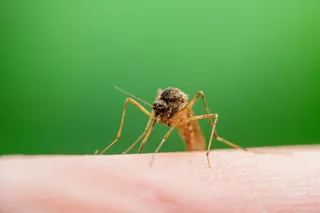There are plenty of unusual theories over the origin of SARS-CoV-2, the virus responsible for COVID-19. From claims that the virus is a bioweapon, to the idea that 5G transmissions are behind the pandemic, there's been no shortage of hard-to-believe ideas.
But there's one COVID-19 theory so remarkable that it makes the others look boring by comparison: The proposal that the coronavirus came from space.
In this post, I'll discuss this wonderfully strange idea and its equally strange history.
The space virus theory has been the work of a group of researchers, notably Edward J. Steele and N. Chandra Wickramasinghe. This group has published ten papers on the topic since the pandemic began, but this paper from July 14th offers the most detailed argument.
Steele et al. suggest that COVID-19 arrived on a meteor which was spotted as a bright fireball over the city of Songyuan in North East China ...














